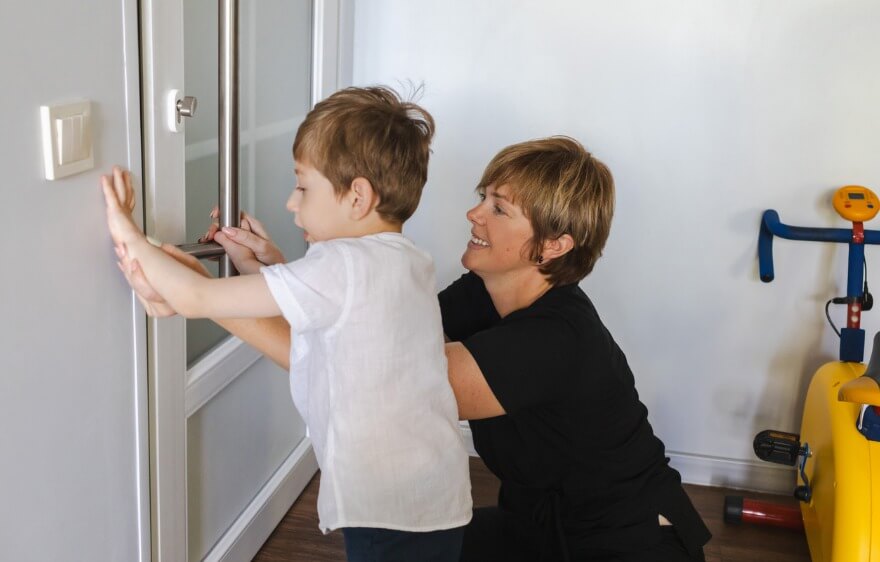Occupational therapy (OT) is a wonderfully diverse field, with opportunities to work in diverse settings catering to different populations and needs. Whether you’re fresh out of school or considering a change in your career path, knowing the most common occupational therapy settings can help you make informed decisions about where you’d like to work.
Each practice setting comes with its own unique environment, advantages, and challenges. In this post, we’ll explore the most common occupational therapy settings — from hospitals and schools to home health — so you can discover which one might be the best fit for you.
Why Occupational Therapy Settings Matter
When choosing occupational therapy settings, you’re not just selecting a workplace — you’re deciding on the people you’ll work with, the pace of your workday, and the types of interventions you’ll use. As an occupational therapist, your work environment can affect your career satisfaction and growth, so it’s essential to understand the pros and cons of each setting. Whether you prefer a fast-paced, sometimes chaotic hospital environment or prefer the intimacy of home health care, occupational therapy settings can help shape your future as an OT.
The Occupational Therapy Settings Where Most OTs Practice
Occupational therapists can work in a wide variety of settings, each offering unique environments and populations. With this many occupational therapy settings, there’s a place for every OT to thrive. Let’s explore the most common occupational therapy practice settings and what makes each one special.
1. Acute Care (Hospitals)
Acute care may be the first place people think of when it comes to occupational therapy, and it’s easy to see why. OTs in hospitals work with patients who have had sudden, severe illnesses or injuries, such as strokes, traumatic brain injuries, or surgeries. The goal is to help patients recover basic functions to transition to the next stage of care, whether inpatient rehabilitation, home health, or long-term care.
Pros:
- Fast-paced environment with a variety of cases
- Opportunities to collaborate with a multidisciplinary team
- Great for OTs who enjoy quick decision-making and short-term interventions
Cons:
- High pressure and demanding work schedule
- Limited time to develop relationships with patients
- High turnover of patients, often with complex medical needs
Acute care is exciting, but due to its pace and complexity, it can also be overwhelming. If you thrive in a fast-paced, dynamic environment, this might be a great fit. But if you prefer working with patients over a longer period, you may want to consider other settings.
2. Inpatient Rehabilitation
Inpatient rehabilitation typically involves staying for a few weeks after a major injury, surgery, or illness. The goal is to help patients regain the skills necessary for daily living and work towards greater independence. You’ll address everything from mobility and self-care to cognitive function and fine motor skills.
Pros:
- Ability to form longer-term relationships
- Significant focus on functional recovery
- Multidisciplinary team approach to care
Cons:
- Physically and emotionally demanding
- Patients may have complex, long-term needs that can be challenging
- Long hours and possible weekend shifts
Inpatient rehab is an excellent option if you want to make a noticeable difference in a patient’s life over a period of time. However, due to the intensity of the work, it can also be physically exhausting, making it important to balance your work-life routine.
3. Outpatient Clinics
Outpatient OT clinics serve a wide range of clients, from children needing therapy for developmental delays to adults recovering from orthopedic surgeries. This occupational therapy setting allows for a more flexible schedule since most sessions are pre-booked and often involve a mix of physical, cognitive, and social-emotional interventions.
Pros:
- Structured, predictable schedule
- Variety of cases, keeping your workday interesting
- More one-on-one time
Cons:
- Less frequent contact with each person compared to inpatient settings
- High turnover, which may limit long-term impact
- Insurance limitations can affect treatment plans
While outpatient clinics offer flexibility and a diverse caseload, some OTs find the insurance-driven nature of these facilities limiting. If you like to work with diverse patients but want more structure in your day, outpatient might be the place for you.
4. Schools
School occupational therapists work primarily with children with developmental delays, disabilities, or sensory processing disorders that affect their ability to perform tasks in a school environment. This occupational therapy setting allows OTs to be integral to a child’s educational team, helping them thrive academically, socially, and emotionally.
Pros:
- Summers and holidays off
- Rewarding work with children and their families
- Collaborative work with teachers, parents, and other professionals
Cons:
- Lower pay compared to medical settings
- May have a large caseload, which can be overwhelming
- Limited time per session due to educational schedule constraints
School-based OT is perfect for those who love working with children and want a schedule that aligns with the academic year. However, the pace can be challenging with high caseloads and brief therapy sessions.
5. Home Health
Home health is one of the most flexible and personalized occupational therapy settings. OTs in this field visit clients in their homes to provide therapy. There are many opportunities to work with pediatric populations through home health agencies that specialize in children with developmental delays.
Pros:
- Flexible schedule and autonomy
- Ability to provide personalized, one-on-one care
- Meaningful relationships with clients and their families
Cons:
- Can be isolating for people who require an in-person team dynamic
- Requires travel, which may add to your workday
- Need for adaptability since each home environment is different
Home health offers an unmatched level of personalization and flexibility, making it ideal for OTs who value autonomy and the ability to tailor treatment to real-world environments. For pediatric OTs, home health allows them to work closely with families to support a child’s development in their natural surroundings, leading to lasting changes. Does this sound good? Join us!
6. Mental Health Facilities
Occupational therapists working in mental health settings focus on helping individuals manage daily activities while coping with mental health challenges such as anxiety, depression, or schizophrenia. These facilities can include psychiatric hospitals, community mental health centers, or residential treatment programs. OTs here emphasize improving self-care, social participation, and coping strategies, often using therapeutic activities to support recovery and well-being.
Pros:
- Ability to help clients improve their quality of life and mental well-being
- Focus on holistic, patient-centered care
- Opportunities to use creative therapeutic techniques
Cons:
- Emotionally demanding, especially with severe mental health cases
- Progress can be slower, requiring patience and long-term involvement
- Often underfunded, which can limit resources and tools for therapy
Working in mental health can be incredibly fulfilling for OTs who are passionate about supporting emotional and psychological recovery. It’s a setting where you can make a profound, meaningful impact on a patient’s life, helping them regain a sense of normalcy and independence.
7. Pediatrics
While pediatric occupational therapy can occur in various settings — schools, clinics, or homes — there’s no denying the unique rewards of working with children. Whether you’re helping a toddler improve their fine motor skills or assisting a teenager with autism in developing social skills, pediatric OTs make a lasting impact.
Pros:
- Rewarding work with children and families
- Creative, playful interventions that can make therapy fun
- Ability to see the long-term developmental progress
Cons:
- Emotionally challenging at times, mainly when dealing with severe cases
- Working with children requires high energy and patience
- Limited resources and funding in some settings, such as schools
Pediatric OT can be one of the most fulfilling paths for those who enjoy working with kids and making a long-term difference in their lives. It’s creative, dynamic, and offers the chance to be a key player in a child’s developmental journey.
8. Skilled Nursing Facilities (SNFs)
In skilled nursing facilities, OTs primarily work with elderly people recovering from surgeries, illnesses, or dealing with chronic conditions. The focus is on helping them regain independence in daily activities, like dressing, bathing, and feeding.
Pros:
- Long-term relationships with people
- Collaborative work with a team of healthcare professionals
- Opportunity to work with an aging population
Cons:
- Physically demanding work
- High proportion of complex medical needs that can be difficult to manage
- Some settings can feel institutionalized, limiting creativity in therapy
If you enjoy working with older adults and want to help them maintain independence, skilled nursing facilities can be a rewarding setting. But the work can be physically and emotionally taxing due to the challenges faced by the elderly population.
Finding the Right Fit for You
Each occupational therapy setting offers its unique blend of challenges and rewards. While hospitals and clinics provide fast-paced, varied environments, home health therapy offers a more personalized approach with the flexibility to meet patients where they are. Pediatric settings, whether in homes, schools, or outpatient clinics, allow you to witness the incredible growth of children over time, while working in skilled nursing facilities gives you the opportunity to help older adults regain their independence.
For many OTs, the personal connections and flexibility of home health and pediatric therapy can offer the most rewarding experiences. Whether you’re looking to build long-term relationships with your clients or enjoy the creative, playful nature of pediatric interventions, these occupational therapy settings may offer the balance and fulfillment you’re seeking in your career.
So, where will your next adventure in occupational therapy take you?
Join the Care Options for Kids Team!
Are you ready for meaningful work that comes with benefits and not burnout? Join the compassionate care team that helps children and families live their best lives. Our clinicians provide best-in-class pediatric nursing, therapy, and school-based services. We bring individualized care to children where they live, work, and play. We have opportunities in homes, schools, and clinics across the country.
Apply at Care Options for Kids now. We make it easy to start so you can make a difference as soon as possible.






